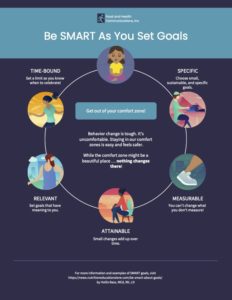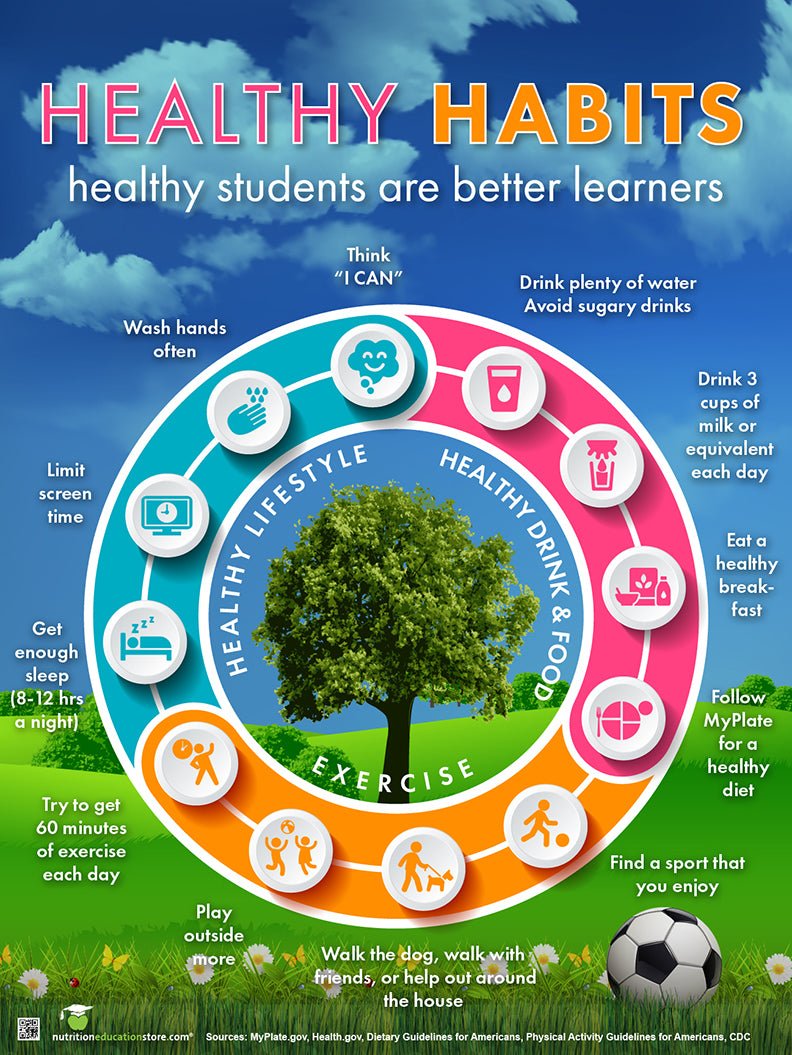Have I mentioned that I just updated all of our comprehensive wellness programs?
Because I have, and I’m really proud of what my team and I have created. The latest updates include information from the 2015-2020 edition of the Dietary Guidelines for Americans, along with a streamlined presentation platform and general improvements that will make these resources more fun for your audience.
So to celebrate that excitement, I’m sharing some slides from one of the most popular programs, The 12 Lessons of Wellness. Today’s preview comes from the show Getting Started, and the slides I’ve chosen offer advice for staying motivated and sidestepping pitfalls on the path to good health.
Let’s take a closer look!
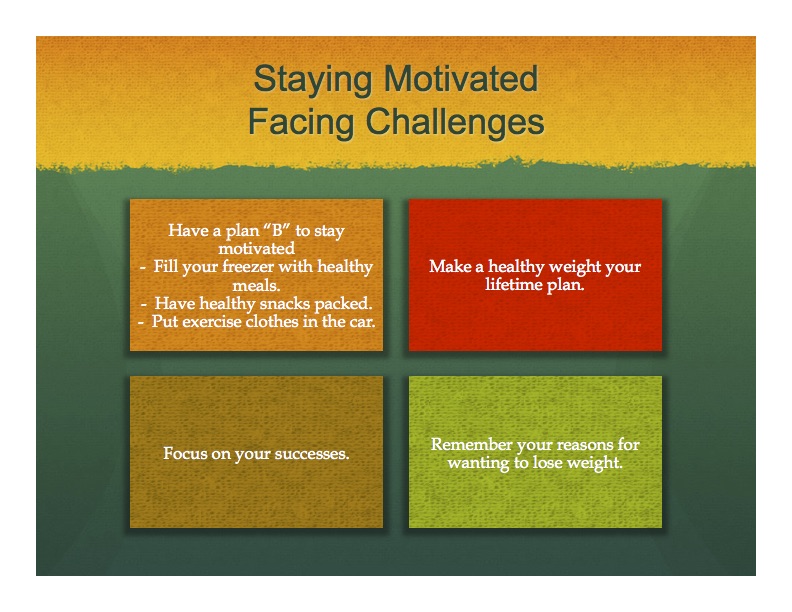
As you embark on any path to wellness, you’ll eventually encounter a few stumbling blocks. That’s totally normal! If you plan ahead, it will be easier to overcome those obstacles and continue on your road to success.
Make sure to have a plan B for when the going gets a bit tougher. Fill your freezer with healthy meals. Prep healthy snacks and store them in the fridge or pantry. Keep some in the car in case an on-the-go craving strikes. Speaking of putting things in the car, toss a few exercise clothes in the trunk so that you’re always prepared for a workout. This will help you avoid skipping workouts because you didn’t plan ahead, and it will also ensure that you are prepared if an unexpected exercise opportunity pops up.
Remember that reaching and maintain a healthy weight is your lifetime plan. When you feel discouraged, focus on your successes and review your reasons for wanting to lose weight in the first place.

Now let’s delve into some detail. How can you stay motivated during special occasions?
One tip is to eat before the party so that you aren’t starving when you face down a festive and lavish spread. While you’re there, focus on the conversation. If you do want to indulge a bit, keep things small, exercise the next day, and eat lighter for the rest of the day or the day after.
At these parties, you may encounter a weight loss saboteur or two. Avoid people who don’t support your efforts and instead find people who share your goals. Who knows? This may be a great opportunity to get a workout buddy!
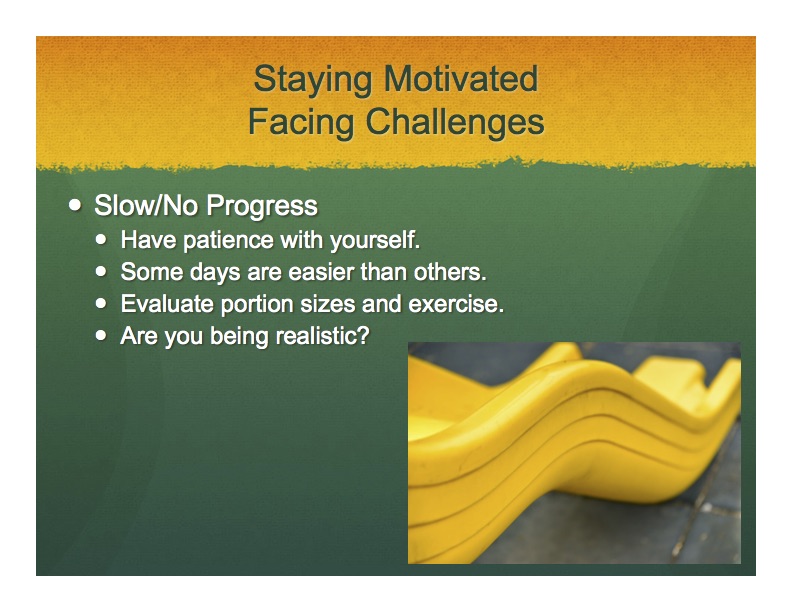
Let’s move on to another challenge. What happens when you hit a period of slow/no progress?
To start, have patience with yourself. Some days are easier than others. Revisit your goals and make sure that they’re realistic. You can always talk with your dietitian or doctor about your frustration too — they’ll have lots of great ideas for you.
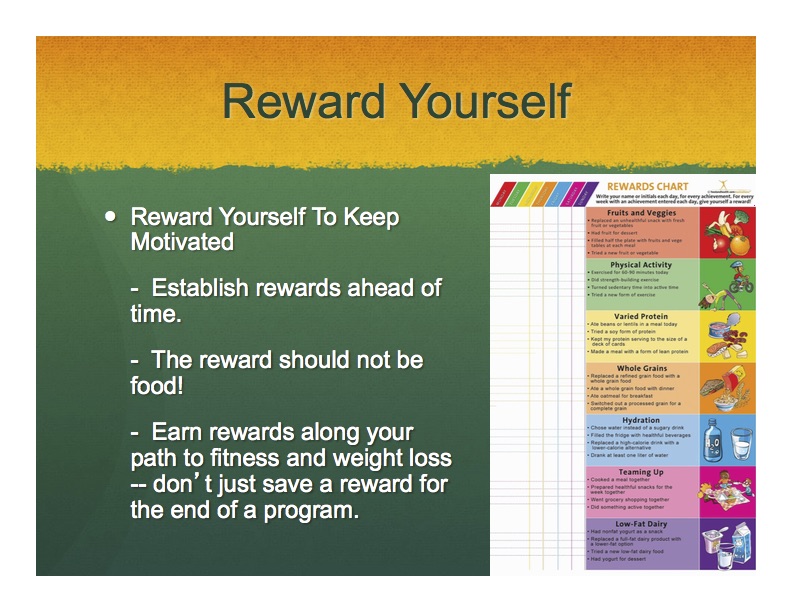 When it comes to keeping your motivation through health and fitness challenges, sometimes a reward is just the boost you need. Establish what your reward will be ahead of time, and remember, the reward shouldn’t be food!
When it comes to keeping your motivation through health and fitness challenges, sometimes a reward is just the boost you need. Establish what your reward will be ahead of time, and remember, the reward shouldn’t be food!
It’s often helpful to set up rewards for milestones, not just the final goal. Plan a few rewards that you can earn along your path to fitness and weight loss — don’t just save one big reward for the end!
The show goes on in much more detail, but that’s where I’d like to stop the sample for today.
If you like what you see, consider exploring the 12 Lessons of Wellness and Weight Loss program. It’s one of the most comprehensive and effective programs for employee weight loss that my team and I have created, and it has been hugely popular.

And, as a special bonus, here are the free printable PDFs of the slides we previewed today!
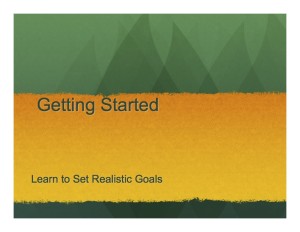
And here are some of the top-selling weight loss resources from the Nutrition Education Store!

7 Simple Ways to Save Calories

Reward Chart Handout

Feel Full with Fewer Calories PowerPoint and Handout Set



